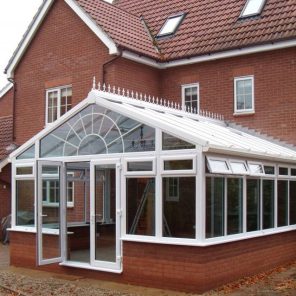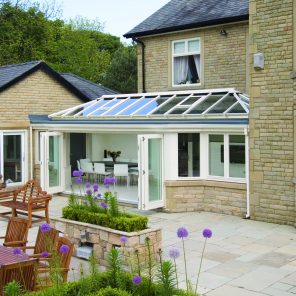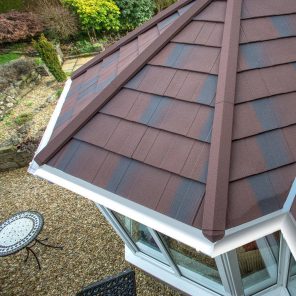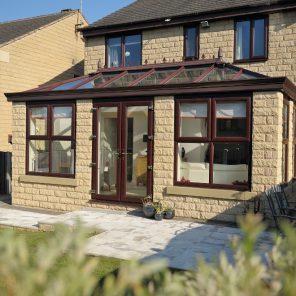Conservatory FAQs
Conservatory & Orangery | Frequently Asked Questions
Conservatory FAQ
There are lots of important questions that arise before deciding on what type of conservatory or orangery you would like for your next home improvement. We have compiled some of the top conservatory and orangery frequently asked questions and technical information to assure you are fully informed.
Can’t find the answer you need about our conservatories and orangeries or if you would like more information contact us today.
How much do conservatories cost?
First Home Improvements conservatories are custom-built to fit your home and your personal specifications. The cost factors will differ between each individual home so giving a specific price is difficult. You should first consider:
- Type of conservatory (Victorian, Lean-to, Georgian, P-Shape, T-shape or a Custom design).
- Size of the conservatory
- Materials that will be needed
- Type of roof required
- How long the installation will take
- Type of glass needed
- External factors that could arise (i.e. a water drainpipe that needs moving)
The factors above will play a park in the cost of a conservatory when you request a no-obligation quote and one of our experienced professionals will be able to give you the most accurate and sensible quotes for your projects.
Looking for finance options on conservatories?
We work as a credit broker, offering conservatory loan options from a range of lenders, these finance options can help spread the cost of your home improvement project.
Do you need planning permission for a conservatory?
In numerous instances, conservatories are regarded as permitted development, meaning you can build without applying for planning permission from your local council. There are certain requirements you must first meet, the ability to build will depend on the size of the conservatory, your boundaries and home.
If you do need to apply for planning permission or building regulations approval to build your conservatory, we’ll be happy to take care of all the paperwork on your behalf.
If you decide to look into conservatory planning permission on your own, we recommended you check through the Government’s planning portal page.
Below are the requirements to meet to be able to build a conservatory without planning permission:
- The construction does not cover more than 50% of the size of the existing house
- It does not include any balconies, verandas or raised platforms
- It won’t be any higher than the highest part of the existing roof
- It won’t be more than 4m high
- It does not obstruct a public road
- No more than half the area of land around the original house would be covered by additions or other buildings
- Single-storey rear extensions do not extend beyond the rear wall of the original house by more than 3m if an attached house, or by 4m if a detached house
- Where work is proposed to a listed building, listed building consent may be required
What’s the difference between a conservatory and an orangery?
An orangery was traditionally used to grow orange trees, the pillars providing shelter and glass to ensure warmth, now they bridge the gap between conservatory and a single-storey extension. Both conservatories and orangeries are used as an extension to your living space and both are made with a mix of brick, glazed options and have glazed or solid roof.
There are differences between a conservatory and an orangery:
- A conservatory has a roof that is all glass, where an orangery has a solid roof perimeter usually fitted with lights and a glazed area in the centre, called a lantern.
- Both conservatories and orangeries have brickwork to elevate the double glazed windows, but an orangery will have glass walls covering less than 50% of the total wall, whereas a conservatory will have a minimum of 50% glass walls covering the area.
It can be hard to know which is best for your home, you can discuss this further with your First Home Improvement expert when they come to survey your home.
What building regulations are there for conservatories?
Generally, conservatories are exempt from building regulations as long as you meet a set of criteria, we would advise that you crosscheck against the governments building regulation guideline for full advice. When you buy a conservatory through First Home Improvements we will take all the hassle out of this process and take care of this for you.
There is a difference between planning permission and building regulations, sometimes both will apply.
Are conservatories covered by buildings insurance?
When a new conservatory is finished, it becomes part of the existing structure of your home and should be covered under your existing buildings policy. As with any addition to your home, you should contact your current provider of buildings insurance to ensure a new conservatory will be covered in the existing policy or if there would be a supplement to pay. If you have a separate contents policy, ensure you check that the items kept in your conservatory are included in the policy.
Can I just replace my conservatory roof?
Yes, you can replace a conservatory roof, when conservatories first became popular in the 1980s and ’90s they were built with polycarbonate roof and had to have 75% made from glazed material, which would let heat out in winter and becoming too warm in summer. Conservatory roof replacements have developed and now you can replace the roof with a new insulated roof and choose from a variety of roof designs from a traditional glass look, fully tiled, flat roofs or a mixture of both with roof lanterns, these modern conservatory roofs provide the perfect temperature control solution year-round. Find out more about conservatory roofing options.
Can conservatories have a solid roof?
The planning rules around the type of roof a conservatory can have changed in 2010, prior to the law change a conservatory needed a roof to be 75% translucent in order to build without planning permission. Now a solid roof is a perfect option when looking at upgrading your conservatory roof, creating the perfect temperature solution year-round. First Home Improvements offer different types of replacement conservatory roofs, so whether you are looking for a tiled roof, warm roof, roof lantern or a flat roof we have the perfect options for your conservatory roof needs.
How can I keep my conservatory warm in winter?
There are a few simple steps you can take to ensure your conservatory stays warm in the winter months, adding blinds or drapes will retain the heat and they help to minimize any draughts that could be getting in.
A radiator can be added to a conservatory but installing an electric radiator which can often be installed without planning permission will cost less than connecting your conservatory to your central heating. Other options include replacing conservatory roof from glass panels to a solid roof or even lay underfloor heating.
Are conservatories secure?
Security of a conservatory is just as important as the security of any room in your home, as it is another entrance a burglar could attempt to break into. Our conservatories are designed to be secure and are built with the latest in security technology to ensure the doors, windows and even the roof are secure.
From a legal perspective, local building regulations determine that there should be a secure wall between the conservatory and your home, this adds addition home security by adding an extra step to get into your home.
Our secure conservatories have been reinforced with:
- The intelligently designed 11-point locking system
- Advanced gearbox technology
- Double glazing on all windows that have been tested to more than 30,000 cycles
- Come with the latest in locking technology with the Blade Lock by Yale.
Our conservatories regardless of style, shape and design are built with the maximum security in mind, if you still have questions regarding how secure your conservatory will be, contact us today.
Customer Reviews
Special offers: Big Savings – Save up to 30% OFF, backed by our Price Promise!










